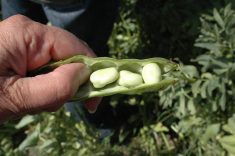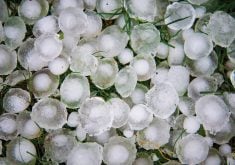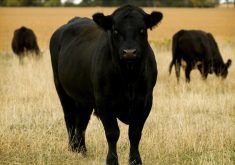Agriculture is leading the charge into research which could ultimately mean flood insurance being available for all Albertans.
As the massive flooding of 2013 highlighted, there is no insurance for such disasters. In fact, Canada is the only one of the G-8 nations without such coverage.
‘Why not?’ is the question that always arises when flooding hits. A big part of the problem is insurance companies in Canada don’t have solid numbers to assess the risk of flooding and so they can’t set a premium rate, said Rick McConnell, a Lacombe-based agricultural insurance consultant.
“If we could show this system works for rural areas, it could also apply to urban settings, and help convince international reinsurance companies to get involved… It could take away the excuses insurance companies use to opt out of flood insurance.”
The system is a new simulation model designed to predict the effects of flooding and drought. And thanks to $1.3 million in Growing Forward 2 federal funding, the Alberta Federation of Agriculture has commissioned a three-year pilot project aimed at quantifying water movement patterns in the province.
“Water-related risks can be catastrophic for the agriculture sector, whether from flooding, excess moisture or drought,” association president Lynn Jacobsen noted at the announcement of the project last month.
Computer simulation models have been done on water flow in the past, but only in bits and pieces for smaller regions — none of it large enough or comprehensive enough to satisfy risk evaluation needs. Doing so involves collecting and plugging in an enormous amount of information, and using a whole lot of computer power. But once a tested model is built, it could be applied in other fields.
So under the guidance of McConnell and Ontario’s Aquanty, the research has begun. Waterloo-based Aquanty has one of the world’s leading hydrology models, and the necessary computer resources.

Making the case
Because of its variability and scope, the South Saskatchewan River basin was chosen as the best place to start. The process will involve running data for the last 20 years through the hydrologic computer simulation model to assess the risk of water-related events. Factors such as elevations, land contours, soils, rainfall, and snowmelt will all be plugged into the mathematical equations for flow.
“Then the model could be tested on certain things in history,” said McConnell. “We could tell if a quarter section of land was too wet to seed, and then compare it to crop insurance claims.”
Once they have enough of those past cases, they could then go to reinsurers (companies that offer insurance to insurers to mitigate risk) and “demonstrate the predictability of the past” — namely, that the system would have accurately predicted flood and drought situations if it had been around earlier.
“Then we could start looking at 2016, and use soil probes, satellite imagery, and crop conditions to check the model’s water movement estimates for the present,” said McConnell. “That would support the model’s predictions for the future. Assessing climate change could also be built in.”

The beauty of such a model, once it’s built and tested, is that it can also show the impact of flood mitigation efforts, ‘testing’ them without having to turn a shovel. It could project contamination patterns from an oil or gas spill, because those flow along with the water. It could also be used for irrigation planning or assessing fisheries habitat.
Insurance companies are paying attention to the project.
The Alberta Federation of Agriculture has also had major interest from Saskatchewan and Manitoba, both provinces having seen major excess water and flood damage in the last few years.
“We’ve been working on getting this going for a full year,” said Jacobsen. “We’re glad to see it move forward because it will have tremendous value for farmers… (and) will generate benefits to a broad segment of society.”
Read Also

Farming Smarter receives financial boost from Alberta government for potato research
Farming Smarter near Lethbridge got a boost to its research equipment, thanks to the Alberta government’s increase in funding for research associations.
















